If you’ve been wondering how to get your dog to eat vegetables, you’re in the right place! We have put together an informative guide to help you out.
Do dogs need to eat vegetables? The answer is no, not really. While pet parents would love nothing more than to bond with their pets over a shared meal, dogs are (mostly) carnivores and, as such, don’t need to consume vegetables.
That doesn’t mean they can’t.
Dogs are curious eating machines and will happily try foods you send their way. So if you’re on a quest to healthify the whole house, pet included, go ahead and swap commercial snacks for vegetables like broccoli, carrots, and beans!
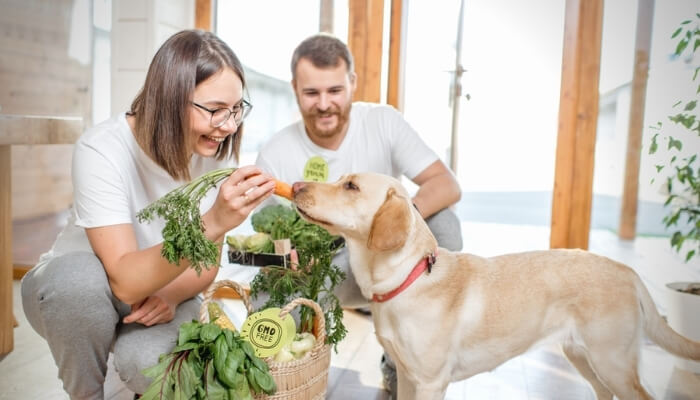
Table of Contents
- Do Dogs Love Veggies?
- How to Feed Your Dog Veggies?
- Steaming
- Pureeing
- Freezing
- Blanching
- Can I Feed Raw Vegetables to My Dog?
- Vegetables that Your Dog Can and Cannot Eat
- Vegetables Your Dog Can Eat
- Cauliflower
- Carrots
- Asparagus
- Broccoli
- Green Beans
- Pumpkin
- Spinach
- Sweet Potatoes
- Zucchini
- Green Peas
- Brussels Sprouts
- Cucumbers
- Celery
- Vegetables Your Dog Cannot Eat
- Onions, Leeks, and Garlic
- Rhubarb
- Tomatoes
- Mushrooms
- Conclusion
Do Dogs Love Veggies?
The short answer is yes. Most dogs love veggies.
If you’ve never tried giving your dog a raw carrot, toss one its way and see what happens. They’d probably have as much fun with a carrot (or any other large crunchy vegetable) as a chew toy or bone.
Did your dog turn up its nose at the carrot? Or perhaps it was a little broccoli floret? Wondering why your dog does not eat vegetables? The answer probably lies in how the veggie was prepared or served. While most dogs love to chomp down on veggies, some are finicky.
Vegetables are notoriously bland and odor-free. If your pet has been on a commercial food diet its entire life, can you blame it for not being curious about something that doesn’t have a strong smell or taste?
Master the art of veggie preparation and watch your dog lap up all the next green, red, yellow, or orange food you plop in its bowl!
How to Feed Your Dog Veggies?
Before we head down this road, we’d like to bring something to your attention. Dog anatomy is different from ours—they don’t quite have the intestinal length to support proper veggie digestion. So if you’re wondering how to serve vegetables to your dog, remember to lean more towards barely cooked rather than served raw.
Without further ado, here are the most common ways to make veggies for your dog.
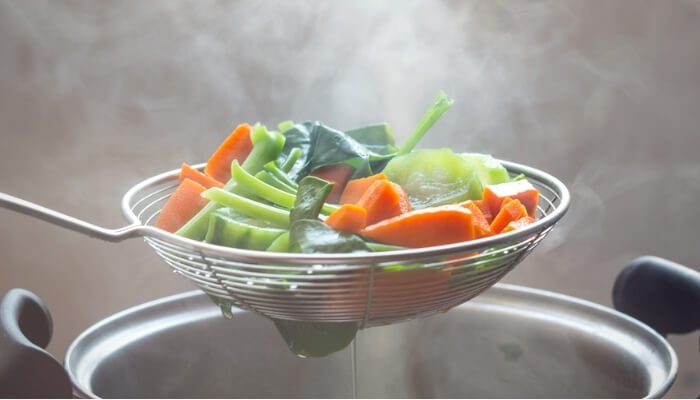
Steaming
Stuck on how to get your dog to eat vegetables? Steaming is one of the best ways to prepare veggies for your dog. Not only is this method simple and easy, but it’s also an excellent way to conserve nutrients and bring out the vegetable’s natural flavor.
Steaming softens vegetables, making it easier for your dog to chew and digest. Your dog didn’t approve of the steamed pumpkin? No worries. Simply override the pumpkin’s subtle flavor with a little chicken or egg and watch your dog lick its bowl clean!
If you’ve never steamed food before, don’t fret. The process is as simple as placing whole or chopped bits of vegetables in a steamer with some water and putting it on the stove. When the veggies are steamed to your liking, remove them from the steamer.
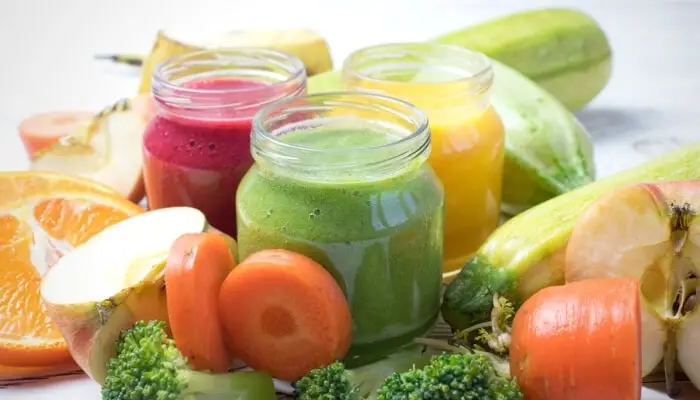
Pureeing
Didn’t win the veggie battle with your dog? Still, stuck with a bowl full of uneaten greens? If you’ve been wondering, how do I get my dog to eat vegetables without much coaxing and persuading, pureeing is your answer!
Blending Or Mashing Vegetables Into A Puree Ensures Maximum Digestibility And Nutrient Absorption. It Also Removes The Risk Of Choking.
While delicate veggies like spinach and celery can be pureed raw, it’s advisable to cook harder vegetables like carrots and sweet potatoes. Pureed vegetables won’t win you any points for being extra tasty. Still, it’s a fabulous way of introducing veggies to your dog’s meal by removing their ability to eat around it.
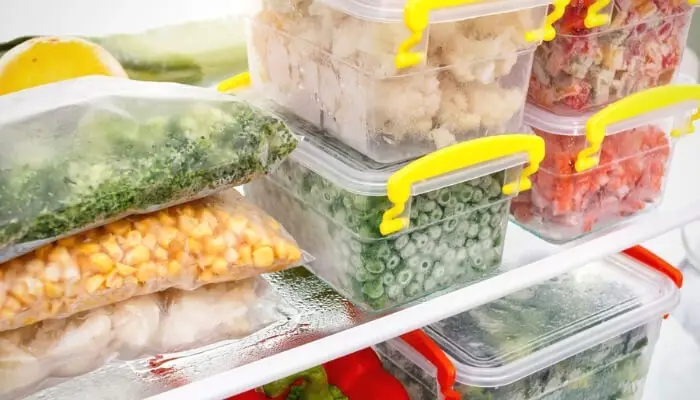
Freezing
Dogs love cold treats, making freezing a fantastic way to get your dog to eat its vegetables. Freezing ticks all the boxes for conscientious pet parents as it preserves flavor and nutrients.
If you find yourself stretched during the week and can’t dedicate much time to dog meal preparation, prepare vegetables as per your liking over the weekend and then freeze it.
Whenever you need to reach for a dog snack, you can toss your pet a frozen pea or broccoli floret, even a slice of cucumber. Need extra goodness? Drizzle the veggies with flaxseed oil (for a glossy coat!) before freezing, and your simple and healthy nutrient-rich nugget is ready!
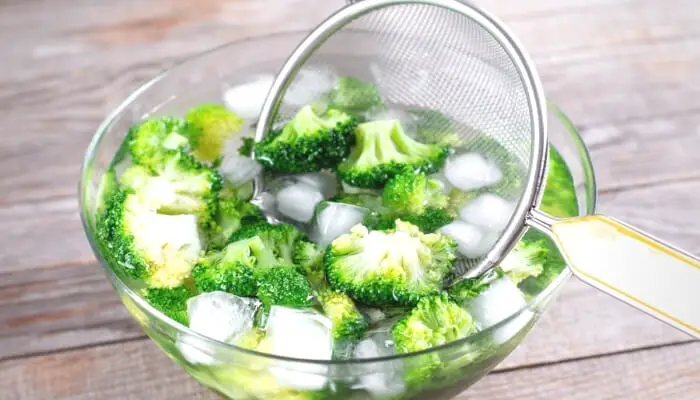
Blanching
Blanching refers to quickly submerging vegetables in boiling water and then dipping them in cold water. It is healthy and simple and helps retain flavor and nutrients. If your dog is struggling to accept the texture of certain vegetables, blanching is a great fix. This cooking method has several advantages as well. It inactivates enzymes, thereby preserving veggies for longer, and allows you to peel without struggling.
Although Vegetables Are Great For Your Pet, To Prevent Health Issues From, Limit Veggie Content To Less Than 25 Percent Of Your Dog’s Diet.
Can I Feed Raw Vegetables to My Dog?
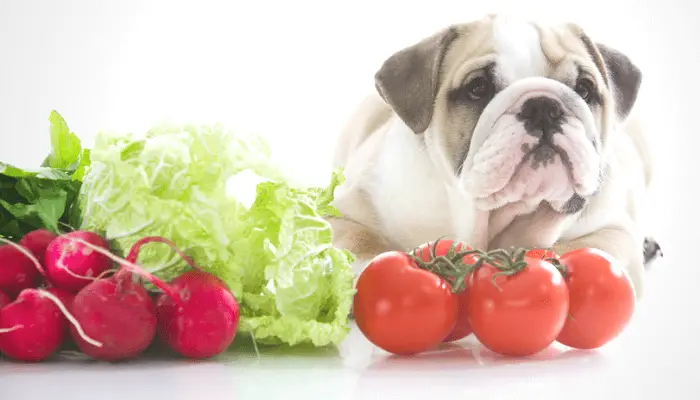
Absolutely! Feeding raw vegetables to your dog poses several benefits like promoting healthier skin, shinier coats, boosting energy levels, and better oral hygiene. The caveat is that you don’t add any seasonings, salts, oil, or butter to the vegetables.
Vegetables that Your Dog Can and Cannot Eat
Asking yourself, what vegetables can dogs eat? Not all vegetables are healthy for your dog. This is why it is important to familiarize yourself with what’s allowed and what isn’t. This knowledge will not only help you put together a healthy meal for your dog, but it can also help prevent issues like frequent stomach upsets.
Vegetables Your Dog Can Eat
If you’re wondering what vegetables to give to your dog, here is a list of some of the best human foods your dog can eat.
Cauliflower
High in vitamin B, C, K, and fiber, cauliflowers can be great energy boosters. They also promote metabolism and bowel movement. However, to prevent choking hazards, cut up the florets into small pieces, and you can either feed them steamed, boiled, roasted, mashed, or baked.
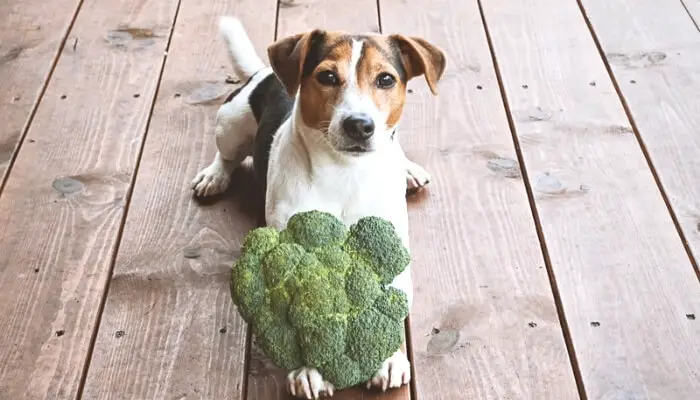
Carrots
Crunchy and long-lasting, carrots are a favorite among dogs. Easy to peel, clean, and chop, carrots are preferred by pet parents too. They’re also among the safest vegetables for dogs! Need something to occupy a bored dog prone to chewing your shoes, socks, and furniture? Try a carrot!
Low in calories and high in fiber, carrots are a great source of beta carotene, antioxidants, and vitamin A—nutrients that boost their immunity and eyesight. Carrots can also be great for easing your dog’s anxiety and maintaining their teeth, gum, fur, and skin health. Their fiber content can help support your dog’s digestive health, and they also make for great training treats. However, feed them in moderation as they are high in carbohydrates.
Asparagus
Asparagus is low in calories but contains an impressive amount of nutrients like vitamin A, B1, B2, C, E, K and minerals like iron, copper, folate, manganese, and potassium. These stalk-shaped vegetables contain a high dose of antioxidants and fiber that can help improve your dog’s immunity and digestive health. However, make sure to thoroughly clean them and also remove their tough, fibrous ends.
Broccoli
Broccoli is a superfood filled with nutrients like vitamins, beta carotene, folic acid, fiber, and calcium. Upon cooking, broccoli also releases cancer-fighting enzymes and phytochemicals, which help keep the cells young and healthy. High in vitamin K, broccoli can help increase your dog’s bone density. The best part? You can serve it raw or cooked.
Ensure That Broccoli Makes Up Only Five Percent Of Your Dog’s Diet As Excess Amounts Can Upset Its Digestive System.
Green Beans
Green beans are full of vitamins like A, C, and K, along with heart-healthy omega-3 fatty acids. They are also great in keeping your dog’s weight under control. So if your dog is overweight, replace some fat-heavy foods with green beans.
As they are high in fiber and carbohydrates, beans can keep your dog fuller for a long time while simultaneously packing a protein punch. They also aid digestion, metabolism, and good bowel movement.
And As Long As They Are Free Of Salt And Seasonings, You Can Also Serve Canned And Frozen Greens To Your Dog.
Pumpkin
Pumpkin’s high fiber content can help regulate your dog’s bowel movement. It is also perfect for maintaining digestive health as it is considered a probiotic booster. Pumpkin is a super fruit that is low in calories but rich in vitamins, calcium, beta carotene, potassium, and magnesium. It can also improve your dog’s cardiovascular health and regulate its blood pressure. Whether canned, cooked, or raw pumpkins can serve as excellent training treats for dogs.
Spinach
A good source of iron, antioxidants, and vitamin K, spinach can help improve most areas of your pet’s health and can be an excellent addition to your dog’s diet. You can either serve it raw or cooked, but it’s best to puree or blanch it before feeding. Some of its benefits include improving eye health, preventing body inflammation, and maintaining cardiovascular health.
Sweet Potatoes
If you find yourself constantly thinking your dog won’t eat vegetables, then try sweet potatoes. Like pumpkins, sweet potatoes offer great nutritional value like vitamins, manganese, copper, thiamine, and fiber. You can either chop them into tiny bits or serve them as larger chips or even puree them. However, you must first boil them thoroughly, as raw sweet potatoes can cause stomach upsets in dogs.
Zucchini
A great source of potassium, magnesium, and vitamin C, Zucchini can be a great addition to your dog’s diet. Low in calories and rich in vitamins and dietary fiber, Zucchini can protect your dog from cancer, infections, and cardiovascular diseases. Since they are not very tasty, the best way to include them in your dog’s diet would be to sprinkle bits on top of your pet’s regular food.
Green Peas
Peas are rich in vitamins like B, C, and K and high in minerals like manganese, zinc, potassium, and folate. A fiber-rich food, peas can boost your dog’s energy levels while improving their bone and skin health. Whether thawed, cooked, or frozen, peas can make for great tasty snacks and treats.
Brussels Sprouts
Brussels sprouts are rich in dietary fibers and full of minerals like folate, potassium, manganese, and high in vitamins like B1, B6, K, and A. They are also full of fiber, and their antioxidant content can help maintain your dog’s cardiovascular health and regulate blood circulation. Their high amount of vitamin C and K can help improve your dog’s immunity and bone density. It’s best to serve them cooked with their tough ends removed.
Practice Moderation As Excess Brussels Sprouts Can Cause Stomach Upset And Diarrhea.
Cucumbers
If you’ve been thinking, how do I get my dog to eat veggies easily, then cucumbers will come to your rescue.
Composed of 96% water, cucumbers make for tasty summer delicacies and excellent training treats. Just cut and freeze, and voila, your dog’s treat is ready!
Cucumbers are low in calories but high in vitamins like K, C, and other nutrients, making them a great addition to your pet’s diet.
Celery
Celery is an excellent source of minerals like potassium, calcium, iron, phosphorus, and sodium. It is also high in vitamins like A, B, and C. You can either feed cooked or pureed celery to your dog or serve it raw after ripping the leaves into tiny pieces. Great acid neutralizers, celeries promote good cardiovascular health and can help reduce anxiety and nervousness in dogs.
Celery Leaves Also Serve As Great Breath Fresheners!
Vegetables Your Dog Cannot Eat
If you’ve been wondering which veggies to keep your dog away from, here’s the list:

Onions, Leeks, and Garlic
Leeks, garlic, and onions can lower the iron content in your dog’s blood, leading to anemia, weakness, and lethargy. In small doses, these veggies can also cause diarrhea, nausea, vomiting, and upset stomach. In excess, they can lead to oxidative damage to red blood cells.
Rhubarb
Rhubarb has components called oxalates that can cause kidney stones or nervous system issues in dogs.
Tomatoes
While ripe tomatoes are not toxic, unripe ones can harm your dog.
Mushrooms
Since mushrooms come with many stipulations and conditions, it’s best to stay away from all kinds, even those not toxic to humans.
Conclusion
We hope this article has helped you understand how to get your dog to eat vegetables. Even more importantly, we hope you’ve learned how to prepare vegetables for dogs.
Vegetables are wholesome foods that are mineral-dense, full of vitamins, contain a wide range of nutrients, and can keep your dog healthy and hydrated.
So, even if your dog doesn’t particularly love vegetables, they make for excellent diet ingredients and great dog treats, especially when compared to the commercial ones. What are you waiting for? Go on and prepare your dog’s healthy and nutritious veggie-filled diet!
You Might also Like the Topics
